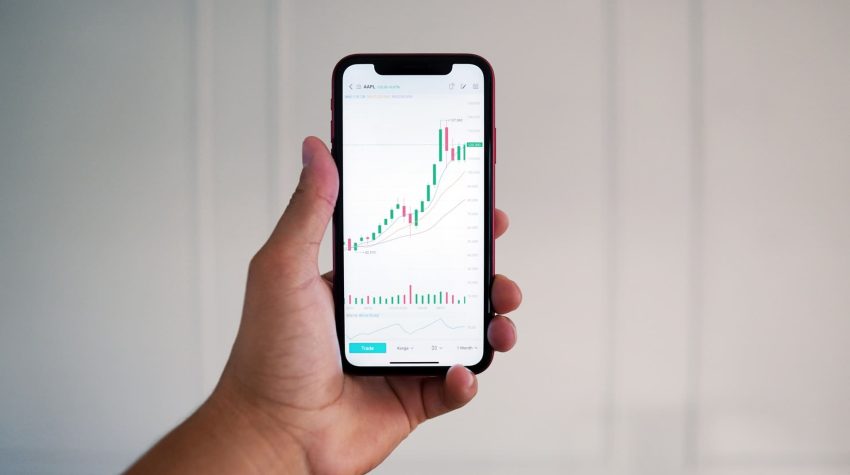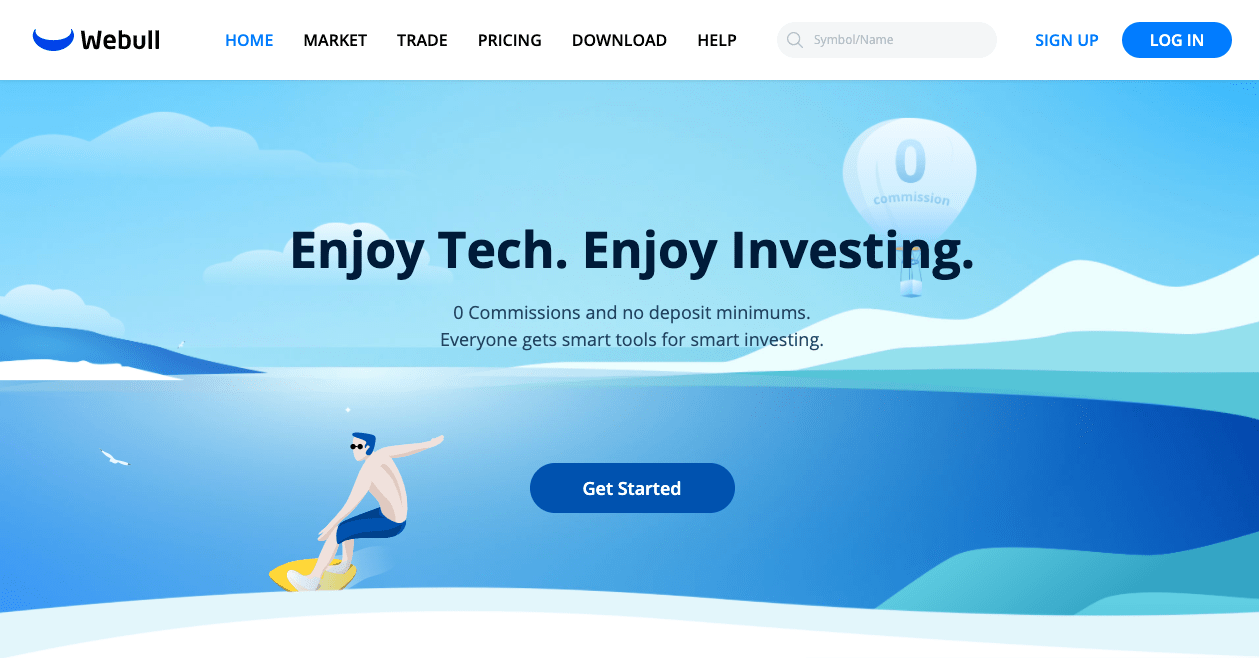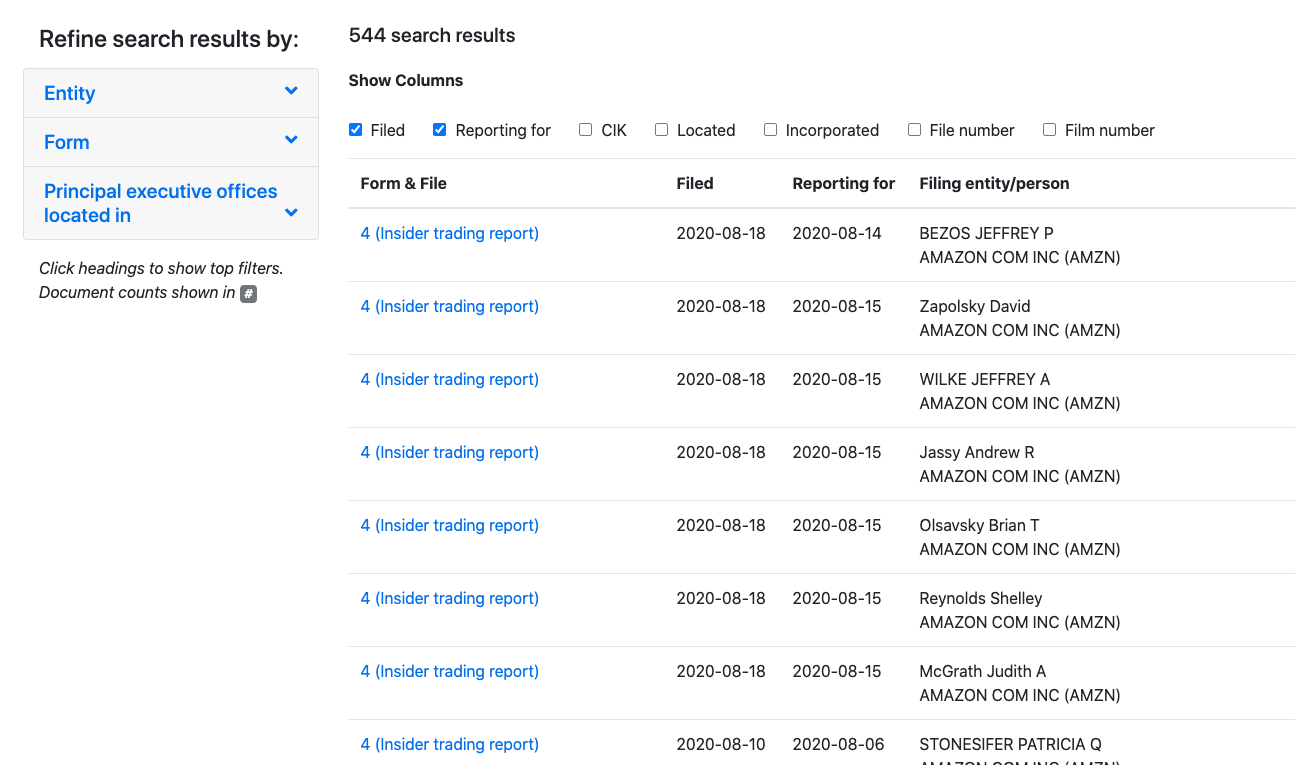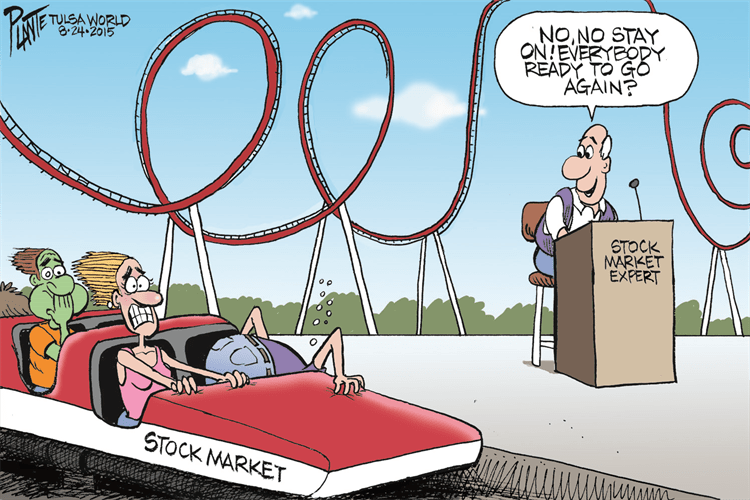
Key Points
- You’ll learn how to buy stocks in this easy step-by-step guide.
- Among other investments, stocks are one of the best ways to build your wealth over time.
- With modern apps and technology being so accessible, anyone can buy and sell stocks from anywhere.
Buying stocks may seem scary. But it doesn’t have to be.
If you’ve never bought a stock before, and need someone to walk you through the entire process step-by-step, this guide is for you.
By the end of this guide, you’ll have done the following:
- Opened a new brokerage account for free
- Learned how to execute an order to buy stocks
- Bought your first stock
Follow along, step-by-step, and start building your investment portfolio so you can build wealth for your future. Let’s begin.
How to Buy Your First Stock: Step-By-Step Beginner’s Guide
- Open a brokerage account
- Choose your stocks
- Decide how many shares to buy
- Execute an order to buy the stocks
- Diversify your portfolio
1. Open a brokerage account
What is a brokerage account?
The first step to buying your first stock is to open a brokerage account.
A brokerage account is a type of investment account used by investors to buy securities. What are securities? Do you mean like security cameras and stuff? Nope.
Securities are basically tradable assets. You can think of things like stocks, bonds, derivatives, ETFs, and REITs.
These are things you wouldn’t be able to purchase at your regular bank account. You’ll instead need a brokerage account.
Put simply
: a brokerage account is a type of investment account that allows you to buy investments like stocks, bonds, ETFs, and more.Finding the right broker
Now that you know what a brokerage account is, it’s time to find a broker. A broker is who you will be opening your brokerage account with. Just like a bank is who you open your bank account with.
There are many great online brokers to choose from.
When choosing a broker, your goal should be to find one that aligns with your experience and investing objectives.
» Learn more about ETFs: How to Invest Money for Beginners: Definitive Guide
For example, if you eventually want to invest in foreign currencies and cryptos, you’ll want to choose a broker that offers those investment options. Not all brokers will.
If you’re more interested in creating a portfolio for long term investments, you’ll want to go with a broker that fits those needs.
Let’s go over a few brokers and who they are best suited for.
Webull — Best overall broker

Webull is the best overall broker for anyone wanting to buy shares of stock for the first time. Both Webull’s website and app are very modern and inviting for new investors.
» See the review: Webull Review
I use Webull, and I’d recommend opening a brokerage account with Webull if you are new or don’t already have a brokerage account.
Webull offers $0 commission and $0 fees on all trades. The service is completely free. Some brokers will charge you commissions every time you buy stocks or any investments. These fees add up and cut into your investment returns over time.
M1 Finance — Best for pre-built portfolios

If you want to buy stocks, but aren’t interested in building your own investment portfolio from scratch, use M1 Finance.
» See the review: M1 Finance Review
M1 Finance is a broker that I use personally, specifically for their pre-built expert portfolio service.
This service allows you to select from dozens of pre-built investment portfolios. These portfolios are designed by expert investors to track certain sectors of the stock market.
For example, if you wanted to buy a portfolio designed to track the general stock market, there’s a portfolio for that. If you wanted to buy a portfolio that only had investments in environmentally friendly companies, there’s a portfolio for that.
My favorite portfolios on M1 Finance are the hedge fund followers. These portfolios mimic the investment strategies of the most successful hedge fund companies in the world.
When you buy one of these portfolios, you are (literally) buying the same investment strategy that these billion-dollar hedge funds use. Except you don’t need millions of dollars.
Stash — Best for automatic investing

Stash is a perfect broker if you want to be 100% hands-off with the entire investing process.
Stash is a robo-advisor. This means when you open an account with them, they will ask you a few questions about your investing goals and current financial situation.
» See the review: Stash review
Based on your responses, Stash will create a custom portfolio for you. The portfolio will usually consist of stocks, bonds, and other securities.
You can also modify the portfolio Stash builds for you and buy individual stocks if you ever wanted.
2. Choose your stocks
Now that you’ve successfully opened and funded your brokerage account, it’s time to actually buy some stocks.
But which stocks? With over 3,800 stocks actively trading on the stock market, how do you know which stock is “the one”?
Well, for starters, there isn’t any single stock that will be the Holy Grail of all stocks. And you definitely shouldn’t invest in a stock just because you saw an article on Yahoo Finance titled “this stock is the next Amazon.”
» Learn more: Stock Investing Basics: A Powerful Beginner’s Guide
How to pick your stocks
Warren Buffett said it best:
“Buy into a company because you want to own it, not because you want the stock to go up.”
And with his $78 billion in assets, I’d say his advice is solid.
When deciding which stocks you want to invest in, start with companies that you are already familiar with.
Perhaps it’s a product that you use every day or a website that you spend a lot of your free time on. You’re using these products and services because you like them. You’ve concluded that they are good.
Does this mean they will make good investments? Maybe.
To answer that question, you’ll need to take a closer look at the company. Check their annual reports, quarterly earnings, SEC filings, and other important news.
This information will give you an idea of what’s happening with the company and how well they are performing.
How to research your stock picks
Annual reports, quarterly earnings, and news can easily be found online by Googling the name of the company then what you’re looking for.
For example, Amazon quarterly earnings or Amazon annual report.
You can also find company annual reports by visiting the investor relations section of the company website.
For the SEC filings, you’ll need to visit the SEC’s EDGAR database. Once there, simply type in the name of the company you want to pull up filings for. For example, let’s type in Amazon.

When you type in Amazon, you’ll see a long list of SEC filings, including some from Mr. Bezos himself.

All of this data you are researching will give you an inside picture of the company.
Does this all sound like a lot of work? I’ll be honest with you—it is. However, there’s a solution.
If you still want to start buying stocks but don’t have the time to research individual stocks, you can buy ETFs instead.
Buying ETFs instead of stocks
An exchange-traded fund (ETF) is a basket of securities (such as stocks)
that trade on the stock market and track an underlying index, sector, industry, or strategy.ETFs allow you to invest in baskets of stocks, without having to individually pick and research each stock.
For example, some ETFs track indexes such as the S&P 500 index. These ETFs hold all 506 stocks that make up the S&P 500 index. This means when you buy one of these ETFs, you are exposing your portfolio to all 506 stocks on the S&P 500.
ETFs also have another advantage over buying individual stocks—diversification.
» Learn more about ETFs: ETFs Investing for Beginners: A Powerful Guide
ETFs are my personal favorite way of adding instant diversification to my investment portfolio.
Since an ETF is a basket of individual investments, such as all 506 stocks that make up the S&P 500 index, you don’t have to worry about your portfolio experiencing rapid swings.
ETFs trade on the stock market like stocks. This means you can purchase them with any broker, including the one you just opened in step 1 of this guide.
3. Decide how many shares to buy
The number of shares you decide to buy is completely up to you. However, I do recommend beginners take it slow.
For example, if this is your first time buying individual stocks, try just buying one share of a stock of your choice instead of dozens, or hundreds. Test the waters.
Get a feel for the market’s day-to-day volatility to see if you’d be interested in buying more shares. Perhaps you don’t like the ups and downs of owning individual stocks. In which case, buying ETFs would be better for you.

I’ll be the first to admit. Seeing your brokerage account balance drop is not fun, even if you know it’s temporary because the stock will go up again (most of the time).
If you want to take it even slower, you can try investing in fractional shares. Fractional shares have gained a lot of popularity over the last few years.
Fractional shares allow you to invest in companies like Amazon, for as little as $1. You’re essentially buying a small piece of the stock, instead of the entire stock.
Not all brokers offer fractional shares. Of the brokers listed above, both Stash and M1 Finance offer fractional share investing—Webull does not.
4. Execute an order to buy the stocks
Now it’s time to actually buy your stocks. You will do this in your brokerage account, so go ahead and get that opened up.
Within your broker’s app or website, you should see an option to buy and sell stocks. This option will be called something different at every broker.
For example, for Webull, this option is simply called Trade. In Vanguard, the option is located under My Account as Buy & Sell. Depending on your broker, you’ll find some variation of this.
Once you’ve located it and clicked on it, you should be taken to an order screen. This is where you will place your order to buy shares of stock.
You may already notice some confusing language, such as order type, stop-loss order, and duration. We’ll go over all these terms below.
In most cases, you’ll buy shares using a market order (more on this below). Simply enter the stock you want to buy, the number of shares, and execute the order.
If you use a market order, your order will be filled immediately, and you’ll officially own stock.
Now let’s go over some of these terms to clear up any confusion.
| Term | Definition |
|---|---|
| Bid | The highest price of a stock a seller is willing to accept. |
| Ask | The lowest price of a stock a seller is willing to accept. |
| Bid-ask spread | The difference between the bid price and the ask price of the stock. |
| Limit order | An order to buy or sell a stock at a specified price. |
| Market order | An order to buy or sell a stock at the current market price. |
| GTC order | A Good ‘Til Cancel order is an order that remains open until you cancel it. |
| Stop-loss order | An order automatically placed when the stock reaches a specific price. |
Bid price vs. ask price
When you buy a stock
, you’ll notice there are two different prices you can buy the stock for—the bid price, and the ask price.What’s the difference between the bid and the ask price?
The bid price is the highest price of a stock (or any security) the seller is willing to sell their stock for or the buyer is willing to buy it for.
In contrast, the ask price is the lowest price of a stock the seller is willing to sell for or the buyer is willing to buy for.
Generally speaking, if you are selling your stock, you would want to get the highest price for it, right? In this case, you would want to sell your stock on the bid.
If you are trying to buy a stock, it would be more beneficial to buy for a lower price, in which case you’d buy the stock on the ask.
A good way to think of the bid and ask price is to think of a car dealership. The car salesman is trying to sell you the car for a specific price they are asking for.
You can either buy the car at the price they are asking for, which will be the higher price, or you can negotiate with them and bid for a lower price. This will get you the car for cheaper.
Limit order
A limit order is a type of order used to buy or sell stocks at a specific price.
For example, let’s say you own shares of a stock trading at $100. However, you don’t want to sell your shares until the price reaches $105 or more.
You would place a limit order (on the ask) to sell your shares at $105. If the price of the stock went up to $105 or more, your order would execute.
You can also use a limit order when buying stocks. For example, if the price of a stock was $100, but you only wanted to pay $95 or less for shares, you would set a limit order (on the bid) at $95.
If the price dropped below $95, your limit order would execute.
Market order
A market order is a type of order used to buy or sell stocks at the current market price.
When you place a market order, either on the buy or sell side, your order will be filled immediately at the current price on the bid or ask.
If you are buying a stock with a market order, you will buy at the current ask price. If you are selling a stock with a market order, you will sell at the current bid price.
GTC order
A Good ‘Till Cancel order is specifically used when placing a limit order. When you place a limit order, you are saying that you will only buy or sell a stock at a specified price.
If the stock never reaches that price, your order will stay open until the end of the trading day. If your order never fills, it will automatically cancel.
For this reason, limit orders can also be known as day limit orders. And that’s where the GTC order comes in.
If you place a GTC limit order
, your order will stay open forever until the price of the stock reaches your limit price.5. Diversify your portfolio
Now that you’ve successfully invested in your first stock (or stocks), it’s time to talk about diversification.
If you aren’t already familiar with the term, diversification simply means spreading your money out across multiple investments.
For example, instead of investing in only one individual company’s stock, you’d invest in multiple stocks. An easy way to achieve diversification in the stock market is to invest in exchange-traded funds (ETFs).
Buying a single ETF can give you more diversification than trying to buy dozens of individual stocks. Even more, ETFs can hold multiple asset classes such as bonds, commodities, and even real estate, all in a single ETF.
» Learn more about types of ETFs: 11 Popular Types of ETFs (ETF Categories & Themes)
Why diversification is important
The reason your portfolio should be diversified is to reduce volatility. Volatility is a fancy word for moving up and down. Think of a rollercoaster.

Portfolios that experience too much volatility can miss out on the powerful effects of compound interest.
This, of course, leads to smaller returns over long periods of time when compared to portfolios that experience little volatility.
How to diversify your portfolio
There are many different diversification strategies. However, as long as you follow the general rules of diversification, you should be protected from the crazy fluctuation of the markets.
Here are the general rules of diversification:
- Rule #1 — Never put more than 5% of your money in any one stock
- Rule #2 — Never put more than 15% of your money in any one ETF or mutual fund
- Rule #3 — Never put more than 25% of your money in any one sector or industry
It’s also important to diversify your portfolio by investing in assets that aren’t correlated. For example, an S&P 500 ETF has very little correlation with a residential property REIT.
This correlation helps reduce your portfolio’s volatility.
» Learn more about REITs: REITs Investing: The Essential Beginner’s Guide to REITs
Conclusion
I hope that you found this guide helpful! If this was the first time you bought a stock, this is only the beginning of your journey.
Building wealth doesn’t have to be complicated. Arm yourself with knowledge and continue saving money to invest it and grow your portfolio.
» Make saving money easier with tools: 18 Best Money Saving Apps
Starting may seem slow. But over time, every bit invested adds up.
About the author








